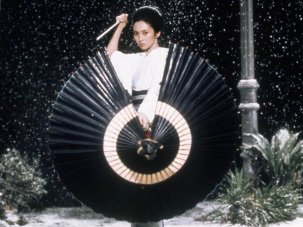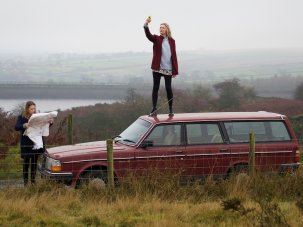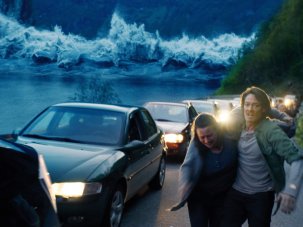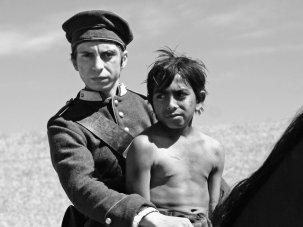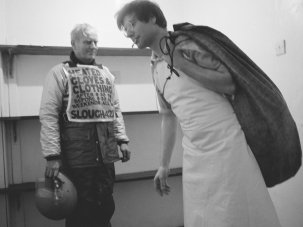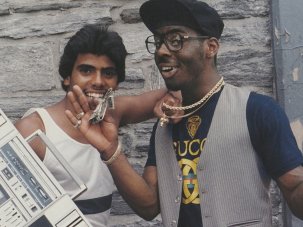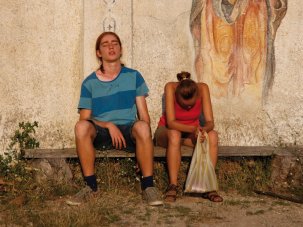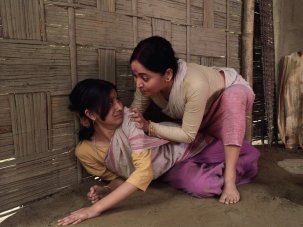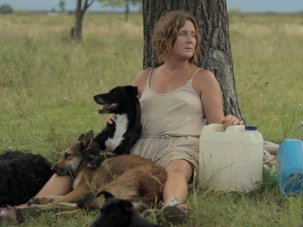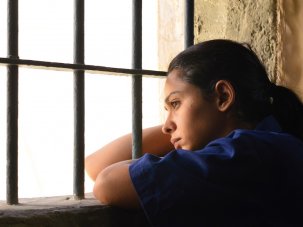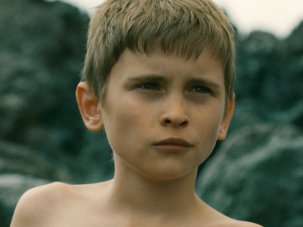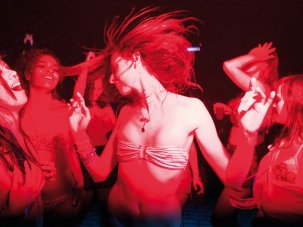Heated Gloves
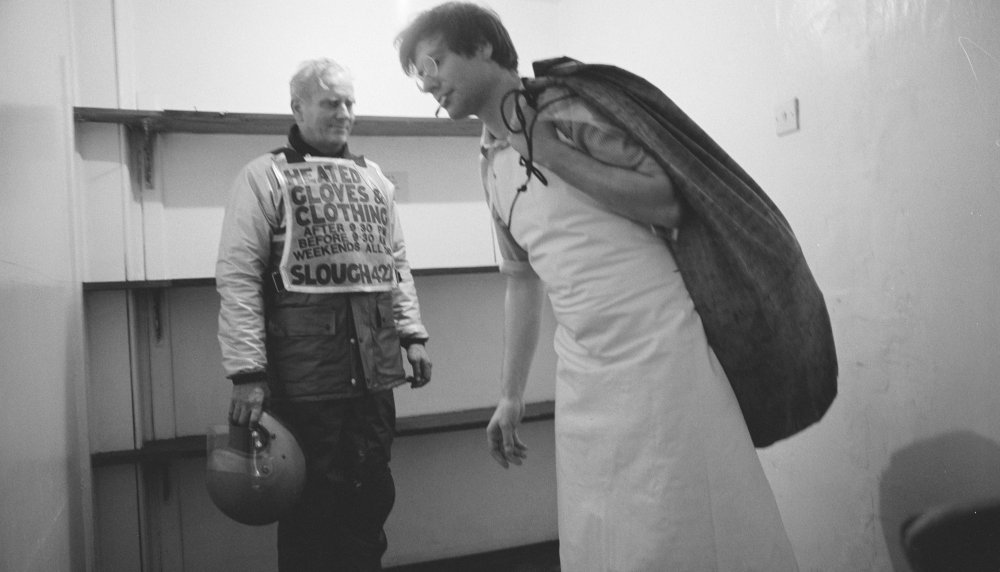
Heated Gloves (2015)
What’s it about?
Modest living, the international mass media, the materiality of moving images and the residual noise of a life lived very differently. It centres on Captain Maurice Seddon, a man who came from money but very quickly had very little money indeed. In fact his anti-normative, unconventional lifestyle was extremely sparse and particular, as this film reveals. He developed and sold electrically heated clothing to people with health conditions and those of limited means. He was able to advertise his wares through numerous international TV appearances and many of these are gathered here, brilliantly sequenced to slowly reveal more about this eccentric, distinctly charismatic man who said “one does things which differ from the things done by others”.
Who made it?
William English, a British independent experimental filmmaker who also presents Wavelength every week on London radio station Resonance FM. He has been making films since the early 1980s.
What’s special about it?
Heated Gloves makes for a rich, immersive viewing experience. It highlights the textural elements of its source material, which includes VHS, 16mm and mobile phone footage. The viewer gradually gets to know Seddon, though is simultaneously made aware that their experience is shaped by his treatment in the media – and by media itself. The film includes brilliant appearances on talk shows with David Letterman and Johnny Carson, both of which paid Seddon to travel to the USA. The film’s more overtly enigmatic moments draw the viewer in, emphasising subjectivity and physical sensation. Seddon is very frank and insightful – in gentle terms – about the consequences of divorce, family breakdown and the trajectory of his life. This viewer was profoundly moved.
William Fowler
Event for a Stage
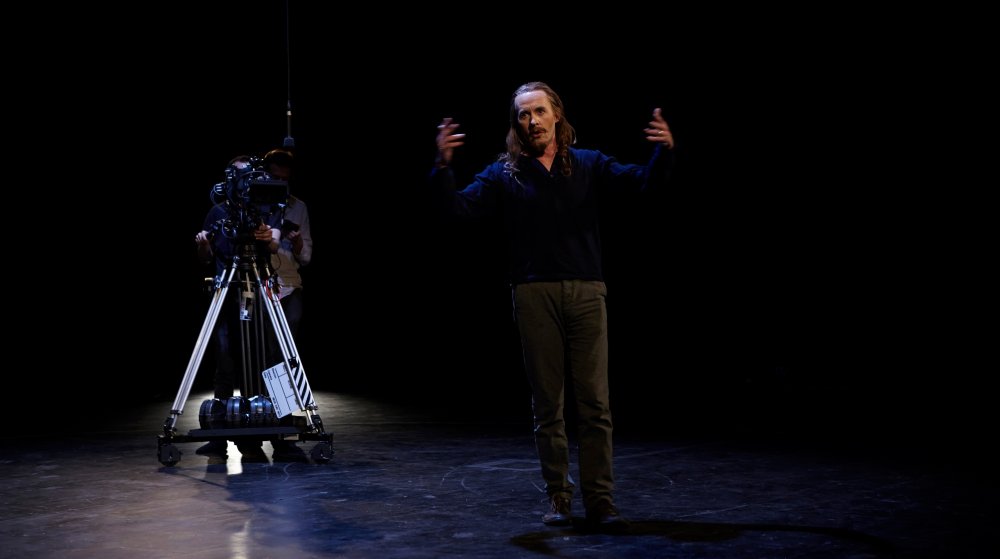
Event for a Stage (2015)
What’s it about?
It started with four events at the Sydney Biennale of 2014. Artist Tacita Dean teamed up with actor Stephen Dillane to develop a theatrical piece that would draw on a mixture of different texts, their order and selection changing each night. Two cameras rolled and Dillane spoke fiercely, reading from Shakespeare and other sources, also calling out instructions, stating changes in the camera reels and snatching sheets of paper from Dean in the front row. The film cuts between each of the four performances with enigmatic tension; the actor constantly on the move. The drama appears to rise from Dean and Dillane’s relationship as much as the texts being read. The four performances collapse into one.
Who made it?
Tacita Dean was pivotal in establishing film, and 16mm film specifically, as a fine art practice in the gallery system in the 1990s and she has been important during recent years in campaigning for the survival of the medium. In 2011 she presented Film, a high-profile special commission in the Turbine Hall of Tate Modern.
What’s special about it?
Event for a Stage presents and explores a form of open, experimental choreography, highlighting each stage in the filmmaking and presentation process – documenting action, filming, editing and screening. The presence of a stage and an audience also mirrors the architecture of the cinema auditorium. It’s at once complex and direct and it evolves and establishes the film’s structure as the performances play out. It’s a bold new work for Dean, highlighting the limits of 16mm filmmaking in what feels very much like a new way for her. It also references classicism via the texts chosen and Dillane’s wigs and makeup. The result is tense and involving.
William Fowler
Park Lanes

Park Lanes (2015)
What’s it about?
Park Lanes follows the working day of a group of people who make the components that when put together make bowling alleys. We see them arrive for work; we watch closely as they make their particular components with dedicated attention; we see them chat over lunch; and when the day is done, we see them go their separate ways as they leave the factory and go home.
Who made it?
Kevin Jerome Everson is currently an associate professor of art at the University of Virginia, Charlottesville. His artwork and films, including five features and over 70 short-form works, have been exhibited internationally at film festivals, galleries and museums around the world.
What’s special about it?
The most special thing about Park Lanes is that it is eight hours long. And it needs to be. It literally follows the working day of its protagonists. We never know their names but we come to know them through closely observing them at their work and during their social interaction with their colleagues. They are ordinary people from a range of different cultural backgrounds who may never have met one another if it were not for working in this factory. In that respect, the factory is a microcosm of American society. We witness the skill and dedication that each worker has for their particular task, a task that may at first seem mundane but as we look closely becomes fascinating. Their job is to produce the components for bowling lanes, a quintessentially American pleasure. They work, so we can play.
Helen de Witt




